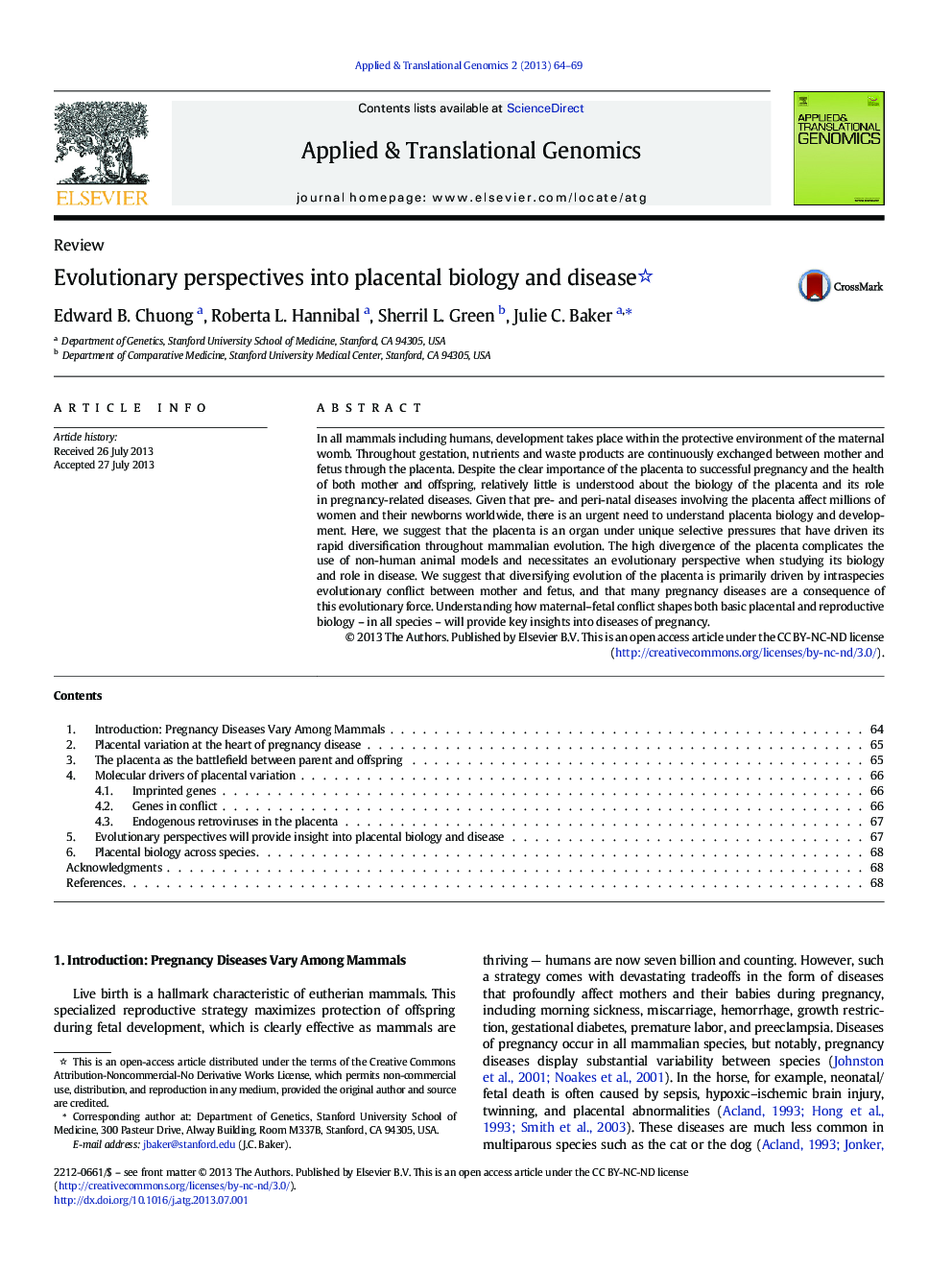| Article ID | Journal | Published Year | Pages | File Type |
|---|---|---|---|---|
| 2773030 | Applied & Translational Genomics | 2013 | 6 Pages |
In all mammals including humans, development takes place within the protective environment of the maternal womb. Throughout gestation, nutrients and waste products are continuously exchanged between mother and fetus through the placenta. Despite the clear importance of the placenta to successful pregnancy and the health of both mother and offspring, relatively little is understood about the biology of the placenta and its role in pregnancy-related diseases. Given that pre- and peri-natal diseases involving the placenta affect millions of women and their newborns worldwide, there is an urgent need to understand placenta biology and development. Here, we suggest that the placenta is an organ under unique selective pressures that have driven its rapid diversification throughout mammalian evolution. The high divergence of the placenta complicates the use of non-human animal models and necessitates an evolutionary perspective when studying its biology and role in disease. We suggest that diversifying evolution of the placenta is primarily driven by intraspecies evolutionary conflict between mother and fetus, and that many pregnancy diseases are a consequence of this evolutionary force. Understanding how maternal–fetal conflict shapes both basic placental and reproductive biology – in all species – will provide key insights into diseases of pregnancy.
